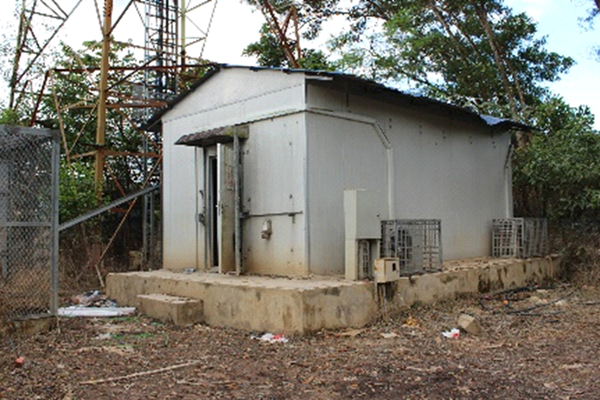Flood Damage Management: Restore Equipment and Minimize Losses

Flood damage poses a significant threat to businesses worldwide, necessitating robust management and mitigation strategies. Different types of floods, such as river floods, flash floods, storm surges, and tsunamis, each present unique challenges. River floods gradually build up, potentially affecting large areas for extended periods, while flash floods arise suddenly with rapid water flow rates, causing immediate destruction. Storm surges, increasingly frequent due to climate change, and tsunami flooding can penetrate far inland, leading to extensive damage.
The 2011 Thai floods exemplify the devastating impact on industrial operations, where prolonged submersion resulted in severe damage to machinery and facilities. Precision equipment suffered from corrosion, and high water levels for an extended period compounded the destruction. Restoring machinery post-contamination is complex yet crucial, with the feasibility relying on factors such as the type of equipment or machinery, the extent of corrosion, and evidence of electrical issues.
Businesses must decide between restoring existing equipment or opting for new replacements, considering the efficiency and cost-effectiveness of restoration against the potential delays of acquiring new machinery. Restoration often offers a quicker return to operational continuity, avoiding the extended timelines and additional training required for new equipment, which can significantly disrupt business operations.
Flood Impact and Management Strategies
The increasing frequency and severity of floods can be attributed to several factors, with climate change being a primary driver. Warmer air holds more moisture, which leads to heavier rainfall and more extreme precipitation events. This has resulted in a higher incidence of flash flooding in urban areas far from major rivers, where risk awareness remains low.
Many homeowners and business owners underestimate the financial risks associated with floods and often lack adequate insurance coverage, leaving them to bear the costs of property and business interruption losses themselves. While state aid programs may provide disaster relief in some countries, this is not a universal solution. In recent years, some insurers have stopped providing flood insurance coverage in areas that are prone to frequent flooding.
Challenges in Flood Recovery and Equipment Damage
Advancements in forecasting and early warning systems have helped reduce the impact of floods in certain locations, highlighting the importance of investment in improved protection measures.
Flood damage encompasses a wide range of issues, particularly concerning machinery, equipment, and buildings. Corrosion from water exposure is a common problem, even more so when seawater is involved, as it is more corrosive than freshwater. Electrical short circuits pose a significant risk to electronic and electrical equipment. In extreme cases, machinery can be swept away by the force of the water, as seen in tsunami situations.
Building damage can affect all aspects of the structure, including walls, floors, foundations, and infrastructure such as electricity, HVAC systems, water treatment, chemical supply, and compressed air systems. The extent of the damage is often related to the height and flow rate of the water, with higher and faster-moving water causing more severe damage.
Understanding Flood Types and Restoration Viability
Effective flood damage management requires a comprehensive understanding of the types of floods, their trends, and the specific issues they cause. Restoration can be a viable option for reinstating damaged machinery and equipment, but it is essential to address insured objections to restoration and provide clear advice on handling flood contamination losses for claims.
Case studies of past flood events can offer valuable insights into the challenges and solutions associated with flood damage management. For instance, the 2011 Thailand floods provide a stark example of the extensive damage that can occur, with high tide marks on walls indicating the water level and the subsequent impact on buildings and machinery.
Site Accessibility and Restoration Logistics
One of the primary challenges in the wake of such disasters is the accessibility to the affected sites. Floodwaters can linger for days or even weeks, making it difficult to reach affected buildings. Even after the water recedes, roads and access ways may be washed away, further complicating the situation.
The removal and disposal of debris become significant issues, as does the availability of cleaning and restoration contractors. In widespread flooding scenarios, the demand for these services can far exceed supply, leading to delays. Companies must also decide whether to restore or replace damaged equipment, a decision influenced by the availability of new machinery and the feasibility of restarting operations in flood-prone areas.
Financial Considerations and Business Interruption Costs
The costs associated with flood damage are multifaceted. Temporary access and services, damage assessment, debris removal, initial cleaning, and mitigation work to prevent further damage are just the beginning. Building repairs, equipment replacement or restoration, and addressing damage to work-in-progress and finished goods add to the financial burden. Business interruption costs, such as loss of sales or profit, ongoing fixed costs, and increased operational costs, further exacerbate the situation.
Additionally, downstream contingent business interruption can occur, where the interruption of a key supplier's business impacts the global supply chain, as seen in the hard disk drive and automotive industries during the 2011 Thai floods.
Effective Machinery Restoration After Incidents
Restoring machinery and equipment is often a viable option to reinstate them to their pre-incident condition, maintaining functionality, reliability, and operational lifespan. This approach aligns with insurance policies' goals to restore the insured to their pre-loss position.
Restoration is typically faster and more cost-effective than replacing equipment, with costs ranging from 20 to 30% of the replacement price. The feasibility of restoration depends on the extent of the damage, with low levels of corrosion and minimal electrical short circuit damage.
Addressing Misconceptions About Electronic Damage
Contrary to common misconceptions, electronic circuit boards are not always damaged by water. Many are coated with a conformal coating that makes them water-resistant, and water is used in the manufacturing process to wash away contaminants. Damage occurs if the circuit board is energised when it comes into contact with water, causing short-circuiting. Restoration is not always feasible, particularly in cases of extensive corrosion or in cases of fire damage also extensive thermal damage.
Nonetheless, many machines can be successfully restored, as evidenced by examples from the Thai floods, where some fire-water-damaged and lightly corroded machinery were returned to operational condition.
Tailoring Restoration Techniques to Contamination Types
Restoration techniques vary based on the type of contamination and the specific circumstances surrounding the equipment. Matching the technique to the type of equipment and contamination is crucial to ensure effective cleaning and avoid further damage. Specialist companies, rather than original equipment manufacturers (OEMs), typically carry out restoration work due to their expertise in decontaminating and restoring machinery.
Engaging a restoration specialist early in the process is essential. Handling flood contamination losses involves appointing an equipment damage assessment expert, involving personnel familiar with the equipment, and conducting an initial walkthrough of the facility.
Identifying business-critical equipment helps prioritise restoration efforts, ensuring that the most vital machinery is reinstated first.
Environmental Stabilisation to Prevent Further Damage
Stabilising the environment is a critical step in the restoration process to prevent further corrosion after water contamination. Methods such as dehumidifying the affected area, using wet space or oil-based metallic preservation compounds, and applying lubricating agents and waxes to metallic components can halt or slow down corrosion.
Collaboration between policyholders and restoration experts is necessary to obtain an inventory of claimed equipment and agree on recovery recommendations. Early engagement of a restoration specialist can facilitate stabilisation work, including disconnecting power, controlling humidity, using temporary barriers to prevent water ingress, and removing excess water from the facility.
Overcoming Objections to Restoration from Insured Parties
Insurers and loss adjusters often face objections to restoration from policyholders concerned about warranty issues, the time required for restoration, the cleanliness of restored equipment, and the long-term functionality of the machinery. Addressing these objections involves providing warranties on restoration workmanship, working with vendors to prove equipment reliability, and obtaining third-party warranties if necessary.
Involving the service vendor in the restoration process can help maintain the relationship and ensure their comfort with the restoration work. This can be achieved by allowing the service vendor to monitor the restoration process, dismantle the equipment for restoration, and reassemble it afterwards. Including the service vendor in testing the restored equipment further ensures their involvement and satisfaction.
Meeting Cleanliness Standards in Electrical Restoration
Ensuring the cleanliness of restored equipment is paramount, especially for electrical and electronic machinery. Professional restoration services can achieve high levels of cleanliness, often verified through post-restoration laboratory analysis.
Independent third-party laboratories can analyse contamination or wipe samples taken from decontaminated equipment to determine residual contamination levels. International standards, such as the ANSI/IPC J-STD-001, provide acceptable levels of cleanliness for electronic equipment surfaces.
Meeting these standards assures stakeholders that the restored equipment is as clean, if not cleaner, than it was before the incident.
Ensuring Reliability and Performance Post-Restoration
Addressing concerns about the reliability of restored equipment is essential. While no equipment, new or restored, comes with an absolute guarantee of performance, manufacturers typically offer warranties to mitigate the risk of failure.
Full testing by the manufacturer or local service vendors can verify the operational status of restored equipment. Reliability studies, such as those conducted by the US Department of Energy, provide valuable insights into the performance of restored machinery. Sharing these studies with stakeholders can demonstrate the effectiveness of restoration efforts and build confidence in the restored equipment's reliability.
Case Study: Steel Mill Restoration in Taiwan
A compelling case study involves a flooded steel mill in Taiwan, where extensive restoration work was carried out by the insured themselves. Despite severe flooding that submerged critical control systems and electrical switchgear panels, the policyholder successfully decontaminated and restored all major machinery and equipment. Remarkably, the facility was back to 80% operational capacity within 15 days of the incident. What’s more, the same facility had a near-identical flood incident some 8 years later, and the policyholder again restored the vast majority of affected equipment, including the distributed control system and electrical switchgear.
This example underscores the resilience of electrical and electronic components when properly restored, even after being completely submerged. The policyholder's proactive approach and expertise in decontamination played a crucial role in the swift recovery of the facility.
Planning for Resilient Flood Recovery
Navigating flood damage claims demands a comprehensive approach, encompassing an understanding of flood types, their increasing frequency due to climate change, and the specific issues they cause. Effective management requires both addressing immediate damage and investing in improved protection measures, including advancements in forecasting and early warning systems.
By adopting a proactive stance and enhancing risk awareness, stakeholders can better prepare for and mitigate the impacts of floods, reducing financial and operational losses.
Making the Right Restoration Decisions
The impact of floods and natural disasters on industrial operations presents significant challenges in accessibility, debris removal, and restoration. The costs are extensive, affecting direct damage, business interruption, and supply chain disruptions.
Restoration of machinery and equipment can be a cost-effective solution, provided the damage is not too severe. Understanding the feasibility and benefits of restoration versus replacement is essential for businesses to make informed decisions.
Strategic Equipment Restoration: Final Thoughts
Restoration of contaminated machinery and equipment can save businesses time and money, particularly when new equipment procurement is not feasible. The process involves careful assessment, matching restoration techniques to the type of contamination, and stabilising the environment. Early engagement with restoration specialists and service vendors can facilitate successful restoration and minimise business interruption. Addressing concerns and providing warranties helps insurers and loss adjusters ensure the long-term functionality of restored equipment.
Restoration vs. Replacement: A Business-Critical Choice
Deciding whether to restore or replace equipment in industrial settings requires considering factors such as restoration timelines, cleanliness standards, and reliability assurances. Professional restoration services, combined with rigorous testing and adherence to cleanliness standards, can often provide a superior alternative to equipment replacement.
Successful case studies demonstrate the resilience of industrial machinery and underscore the potential benefits of informed decision-making to optimise operational efficiency and minimise downtime.
Partner with Envista Forensics for Flood Damage Expertise
Flood damage can be devastating, but with the right expertise and a proactive approach, recovery is not only possible but can also be optimised. At Envista Forensics, we specialise in assessing, restoring, and documenting complex equipment and structural damage resulting from floods and other catastrophic events.
Our global team of forensic engineers, equipment restoration experts, and loss consultants provides the insight and technical analysis needed to make informed decisions about machinery restoration versus replacement.
Whether you're facing contamination, corrosion, business interruption, or concerns over equipment reliability, we help you navigate the complexities of recovery with speed, clarity, and confidence. From on-site damage assessment to expert reporting for claims support, Envista is your partner in minimising downtime and maximising operational resilience.
Don’t wait until the next disaster strikes.
Contact Envista Forensics today to learn how our expert team can support your recovery, mitigate losses, and help you build a more resilient future.
Nuestros consultores están listos para ayudar.




